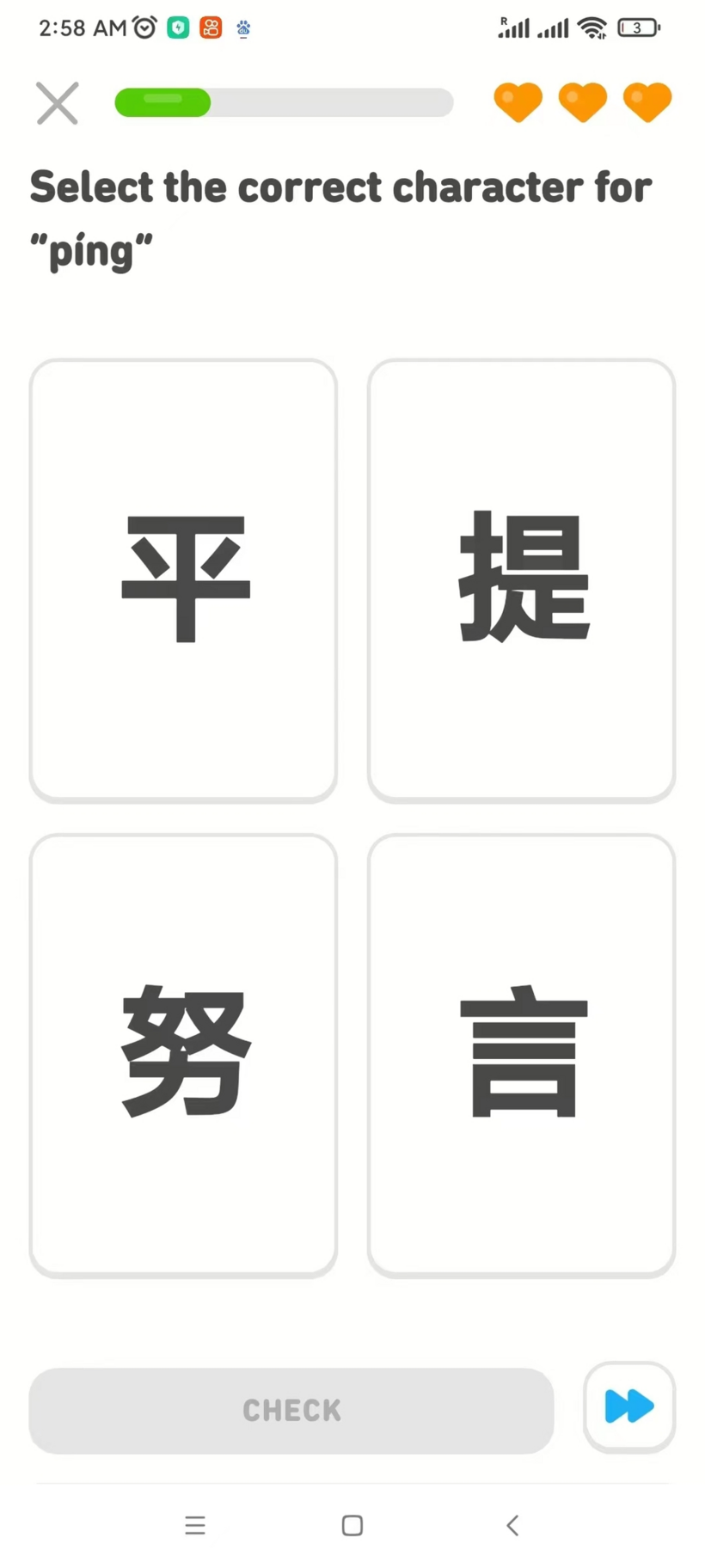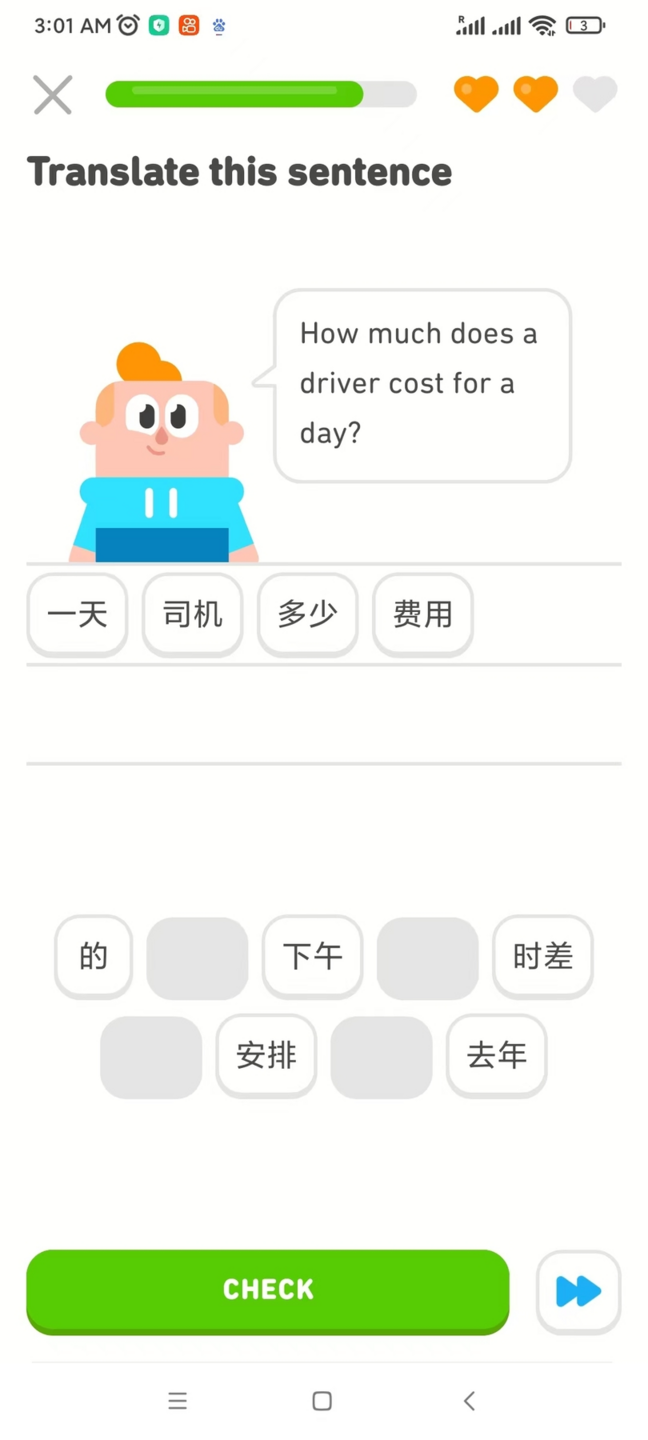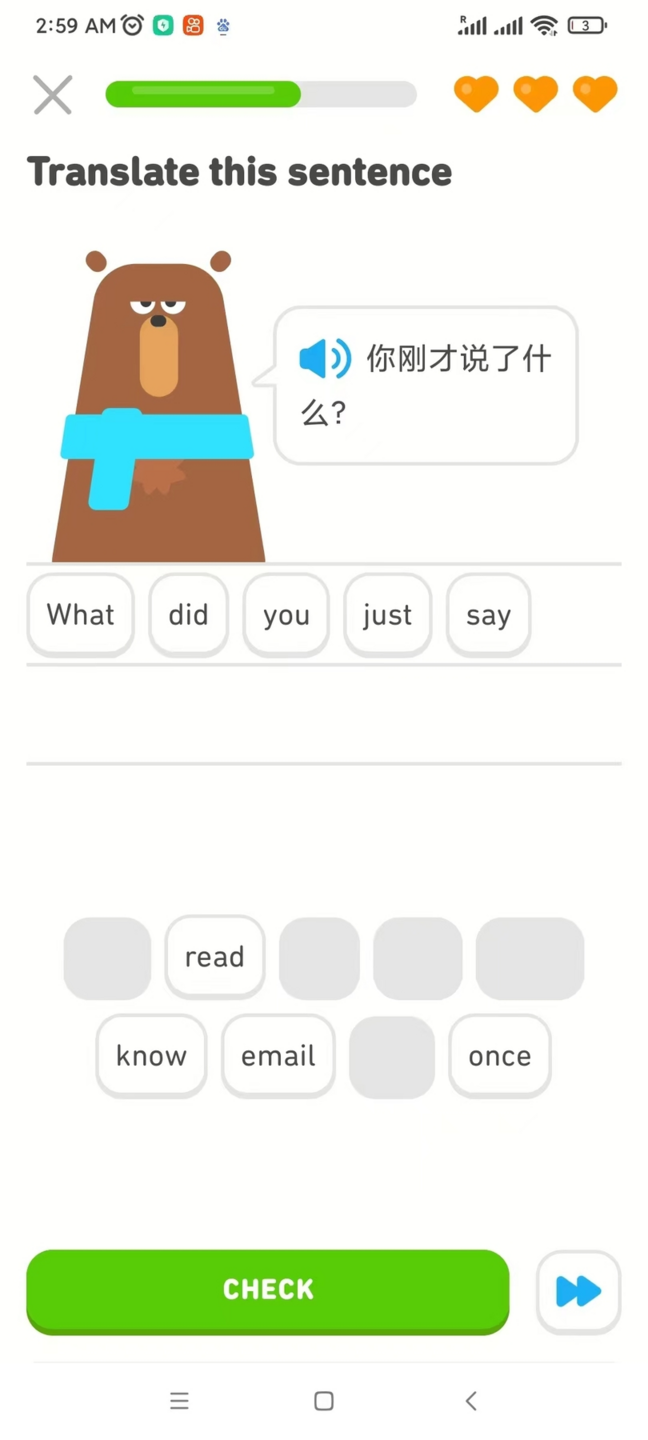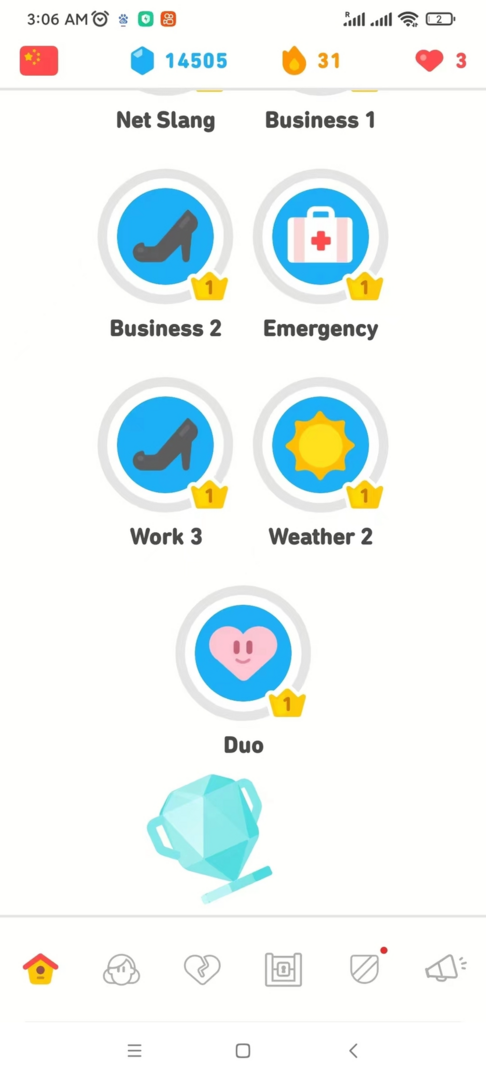Can you learn Chinese on Duolingo? A detailed review
October 25, 2022
Duolingo is undeniably the most popular language learning app in the world right now. With over 500 million registered users , Duolingo even claims that more people learn languages on its app in the United States than in the entire American school system!
And by being so popular it also invites polarizing opinions. Some people really love it while others hate it.
The lovers would usually say the app is fun, accessible, engaging and easy to use. The haters, usually people with educational or linguistic backgrounds, would mention everything Duolingo is lacking – primarily grammar explanations and adequate speaking and writing practice.
Being an avid language learner and at the same time working in language education for over a decade, I belong to neither the lovers or haters camp. Instead, I think it can be useful for some aspects of language learning but not as useful for others.
In this article I want to look at whether Duolingo is useful specifically for learning Simplified Mandarin Chinese, what Duolingo’s main advantages and shortcomings are, what level you can reach by learning Chinese on Duolingo, and what are some other Chinese learning alternatives.
What makes Duolingo a great app?
What is Duolingo lacking for learning Chinese?
Who is Duolingo really good for?
What Chinese level can you reach learning on Duolingo?
Can you learn to speak Chinese on Duolingo?
Is it worth buying the paid version of Duolingo?
Is Duolingo effective for learning Chinese?
Would I recommend Duolingo to Chinese language learners?
What are some alternatives to learning Chinese on Duolingo?
Conclusion
What makes Duolingo a great app?
Duolingo at its core is a gamified vocabulary memorization app, or a “flashcard app”. It shows you new words and then tests you on whether you remember those new words in various ways. The idea behind the app is that if you see the new word or phrase enough times, spaced in the right way over a set period of time (this is called “spaced repetition”), you will eventually remember it. So what are some things that make Duolingo so successful?
1) Duolingo is (almost) free
Duolingo has a free and paid version. You can use the free version forever and it allows you to learn all the languages it offers on all available levels. There are only two caveats with the free version – after completing an exercise you will see a random video ad, and you have five “hearts” that run out when you make mistakes in the exercises (though you can technically “earn” them back).
2) It is super intuitive and easy to use
With a clear interface, very straightforward exercises, and cute design (the green owl mascot is adorable), Duolingo is a pleasant app to use with little to no bugs.
3) It allows you to follow your friends
Duolingo plays on the social aspect of learning by creating leaderboards and allowing you to follow your friends and give them a “high-five” when they accomplish things in the app. If social encouragement is something that works for you, Duolingo has you covered.
4) Vocabulary is focused on traveling
Duolingo has probably figured out that the biggest portion of its language learners use it to prepare for or while traveling to other countries. So, while there is also other vocabulary included in the app, the majority of the vocabulary is centered around making small talk, ordering in a restaurant and other travel related things. I personally learned some Romanian on Duolingo when I went on a trip to Romania recently and found it useful on my trip.
5) Duolingo includes pronunciation and Chinese characters (in other languages – the local alphabet)
Duolingo Chinese also includes recognizing the Chinese sounds and Chinese character recognition, which is great. It does the same for all languages - I am learning the Arabic alphabet that way now.

What is Duolingo lacking for learning Chinese?
Now that I have mentioned everything that is great about Duolingo, let’s talk about what Duolingo is lacking for Chinese language learning:
1) Duolingo gives you zero background to the language
Duolingo works by immersion – it introduces words, sounds, and characters without context or explanation, and you are expected to connect the dots on your own. While this system definitely has some merits, it leaves you with a very shallow understanding of how the language works.
For example, if you really want to understand how Chinese pronunciation works, the building blocks of the Chinese characters, or the basic Chinese sentence structure, you would need to go on Google or talk to a Chinese teacher for an explanation.
This system is not made for students who want to study Chinese long-term; you might learn vocabulary and some character recognition, but you will be lacking a base of the understanding of the language to help you on your long-term learning journey.
2) The speaking portion is buggy
While Duolingo has a small speaking portion included in the app – and by “speaking”, the app developers just want you to repeat set phrases or words into the mic – it never worked for me when I tried to use it, nor for my partner Eden.
3) The Chinese courses on Duolingo end at a beginner level
If you were hoping to reach a high level of Chinese on Duolingo you might be disappointed. After you finish all four Chinese units on offer on Duolingo, the level you would theoretically reach is at most equivalent to an advanced beginner - HSK 3 (A2) - though I personally think it is even lower than that.
- Don't know what is the HSK? Read this guide to the HSK to find out.
4) Duolingo does not prepare you to have real conversations
In Duolingo, you learn to recognize and use individual words and short set phrases. But knowing set phrases does not prepare you for having full dialogues where a conversation goes back and forth, as it requires knowledge of different sets of responses, high-level listening comprehension skills, and knowing how to ask follow-up questions. You will not learn these skills on Duolingo.
5) Duolingo gets boring after a while
While the app does a good job of gamifying the learning experience, you eventually end up doing a very similar type of exercise over and over again. Most exercises on Duolingo are multiple choice questions where you need to match a word to its definition. The few other exercises include phrase translation, word matching, and putting words in the right order. It can hold your interest for a little while but eventually it can get quite boring.

Who is Duolingo really good for?
Duolingo, from my experience, is mostly geared towards people who want to know just a little bit of many different languages. It is also great for learning a few useful words and phrases when traveling to new countries. Finally, if you are taking classes in a school or with a teacher and are looking for one more way to practice, Duolingo is just as good a study tool as any.
What Chinese level can you reach learning on Duolingo?
According to the Duolingo website, the highest level you can reach in Chinese on the app is an advanced beginner - HSK 3 (A2). Personally, I feel the level is lower as on Duolingo you don’t get a good theoretical base of the language and you don’t learn to read longer texts or have longer dialogues.
Can you learn to speak Chinese on Duolingo?
Not really. On Duolingo, you will learn to recognize and say certain set phrases. While it can be useful for asking for things that you need in a shop or a restaurant, that would certainly not prepare you for having a longer back-and-forth conversation in real life.

Is it worth buying the paid version of Duolingo?
I have “learned” four different languages on Duolingo, and for me the free version is more than sufficient. I actually prefer not to have unlimited “hearts” that the paid version offers as then I will be less careful and make more mistakes just to get through levels.
Is Duolingo effective for learning Chinese?
This depends on your purpose. Duolingo is great to get a first taste of the Chinese language and for learning a few useful phrases that you can use when going to a Chinese restaurant or to impress people. If you are looking to learn Chinese systematically and hoping to reach a higher level, you are better off taking classes (did I mention Culture Yard offers online Chinese classes? -wink wink- ).

Would I recommend Duolingo to Chinese language learners?
Duolingo can be a useful secondary tool for practice, complementary to Chinese classes with a school or a teacher. Duolingo can also be useful for getting a feeling of what Chinese looks and sounds like and learning a few useful phrases. I would not recommend Duolingo if you are a serious Chinese language student aiming to become fluent or work with the Chinese language.
What are some alternatives to learning Chinese on Duolingo?
Alternatives for Duolingo include other language learning apps, audio courses, books, and classes at a school or with a private teacher. Among the many Chinese language learning apps, besides Duolingo, I found Hello Chinese to be the most useful (it is quite similar to Duolingo).
If you are more of an auditory learner, the Pimsleur method is a tried-and-true approach for learning spoken Chinese just by listening.
Among the many Chinese learning books, my all-time favorite is the not-so-new New Practical Chinese Reader.
And finally, for serious long-term learning, learning systematically in a school with experienced teachers is still your best bet. If you are looking to learn Chinese online with experienced native teachers, check our online Chinese course options here.
Conclusion
I hope this article was useful for you to decide whether Duolingo is the right tool for you in your Chinese learning process. While Duolingo has many advantages, nice features and a great free version, it is still a very limited app for language learners. All in all, Duolingo is a great to get a taster of a new language rather than a complete tool to learn Chinese for the long-term.About the Author
Ilya Cheremnikh
Ilya started learning Chinese in 2004 and never stopped. He lived in China for 14 years and loves sharing his tips on learning Chinese.
